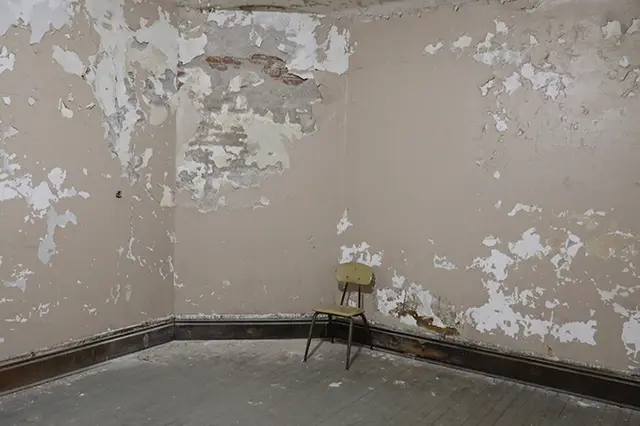How Much Does Mold Removal Cost? Here Are Some Guidelines To Help
Mold may be the last thing you think of when you’re dealing with your home or business, but it can turn deadly in a hurry. Left unchecked, mold can cause serious health problems, including asthma and allergies. In fact, it can even be fatal. That’s why it’s important to know how to identify and remove mold as quickly as possible. In this article, we will provide you with some guidelines to help you do just that. We hope these tips help you get your property back in shape and keep you safe from harm.
The Different Types of Mold
There are many types of mold, so it can be difficult to know how much removal will cost. Guidelines on how much removal costs vary depending on the type of mold and the size of the mold colony.
Some typical types of mold include:
-Stachybotrys chartarum: This type of mold is often found in damp environments, such as in the basement or on the roof. It can produce a black substance that smells bad. Stachybotrys chartarum can cause serious respiratory problems if it is inhaled.
-Aspergillus fumigatus: This type of mold is found most often on food and can produce a potent smell. Aspergillus fumigatus can cause severe allergic reactions in people who are sensitive to it. It can also cause lung damage if it is inhaled.
-Penicillium chrysogenum: This type of mold is commonly found on stored foods, such as bread dough and cereal. Penicillium chrysogenum can form brownish masses on food that may spoil it.
-Mold spores: Mold spores can be found all around us, and they can grow and cause mold if they’re in an environment that’s conducive to growth, such as a damp basement. Mold spores are not harmful unless they are inhaled.
-Cladosporium cladosporioides: This type of mold is often found on moist surfaces, such as in the shower or on a wet window. It can produce a white powder that can be difficult to remove. Cladosporium cladosporioides can cause severe respiratory problems if it is inhaled.
How to Detect Mold
Mold is a common problem in homes and can cause serious health concerns. Here are some tips to help you identify and remove mold:
1. Look for visible signs of mold. Mold may produce black spots on surfaces or white patches that grow quickly. It may also produce a musty smell.
2. Check the air quality. If you suspect there’s mold, increase the ventilation in the room and check the air for traces of spores (like those from bacteria).
3. Test the surface for mold growth using a white light microscope. Mold will often grow on surfaces that are wet or damp, such as behind water pipes or in basements where there’s constant moisture buildup.
4. Remove any visible mold using a clean cloth, trigger-spray cleaner, or a mop and bucket. Be sure to wear gloves and protective eye-wear when cleaning so you don’t inhale any particles harmful to your health.
5. Clean the area where the mold was found using a bleach solution (1 cup of white vinegar to 1 gallon of water) and a scrub brush. Be sure to wear gloves and eye protection when cleaning.
6. Dry the area completely before returning it to use.
What to Do If You Suspect You Have Mold
If you suspect you have mold, the first step is to identify the type of mold. There are five types of mold:
1. Fungi: These are single-celled organisms that need moisture and food in order to grow. They can be found growing on organic material such as wood, paper, or cotton.
2. Molds: Mold is a type of fungus that grows on natural materials like cardboard, fabric, or tile. It can release toxins which can cause respiratory problems and other health issues.
3. Aspergillus: This fungus commonly grows on grains, nuts, fruits, and vegetables. It produces a toxin that can cause serious health issues including death in high doses.
4. Penicillium: This fungus commonly grows on bread crusts and other processed foods. It produces a toxin that can cause allergic reactions and other health problems in high doses.
5. Stachybotrys chartarum: This fungus commonly grows on building materials such as carpets, insulation, or drywall. It produces a toxin that can cause serious health issues including death in high doses.
If you are unsure which type of mold you have, it is best to get a professional assessment. There are several steps you can take to reduce your exposure to mold while waiting for a professional assessment:
1. Remove any contaminated material. Throw away any material that has mold growing on it, even if it doesn’t look affected. This includes anything that was in contact with the contaminated material, such as furniture, books, or clothing.
2. Ventilate the area. Make sure there is adequate ventilation in the area where the mold is present. This will help to prevent the buildup of toxins in the room.
3. Wash all clothes and linens that were in contact with the moldy material. Wash all clothes and linens in hot water and then dry them completely. This will kill any potential spores that may be on the clothing and linens.
4. Take precautions for asthma and other respiratory issues. If you have asthma or other respiratory problems, take appropriate precautions such as using an air purifier or wearing a mask when cleaning up the area.
5. Call a professional. If you find mold, it is best to call a professional who can assess the situation and take appropriate steps to reduce your exposure.
How Much Does It Cost to Remove Mold?
The average cost to remove mold is around $250 to $2,500. Mold removal is definitely not a cheap endeavor, but fortunately there are ways to save money on the cost of mold removal. Here are some guidelines to help:
1. Get an estimate from a professional: A professional Mold Removal Company can provide an accurate estimate for the cost of removing mold and identifying any damage that may have been caused by it. They will also be able to advise you on any additional precautions that may be necessary in order to prevent future mold growth.
2. Consider hiring a contractors: If you’re unable or unwilling to take on the task yourself, consider hiring a contractor who specializes in mold removal. They will be familiar with the techniques and equipment necessary for removing mold and will be able to quote you a price based on the amount of work required.
3. Use air purifiers: One of the best ways to avoid exposure to mold spores is by using air purifiers in your home. Not only will this help reduce the amount of potential damage caused by mold, but it will also help improve your respiratory health overall.
4. Save on repairs: One of the biggest costs associated with mold is the cost of repairs to damaged property. By taking preventative measures like cleaning and inspecting your home regularly for signs of mold, you can reduce the likelihood of damage in the first place.
5. Ask for help: If you find yourself struggling to remove mold on your own, don’t hesitate to ask for help from family and friends. Many people are willing and able to lend a hand if they know there’s a potential for helping someone in need.
What to do if You Can’t Afford to Remove Mold Yourself
If you cannot afford to remove mold yourself, consult a professional. Professionals typically charge between $250 and $2,500 for a full mold removal and remediation job. If the mold is only in a few spots, a prosumer may be able to do the job for less money. However, be prepared to pay extra for detailed inspection of the entire property after removal.
Conclusion
In short, mold removal costs vary depending on the type of mold, the size of the mold colony, and the extent of damage caused by the mold. However, overall, removing mold can cost anywhere from $250 to $2,500. If you suspect you have mold, be sure to get an estimate from a professional and take appropriate precautions to reduce your exposure to spores.

